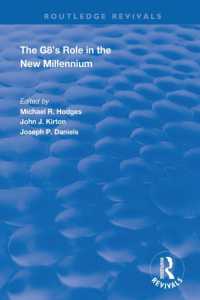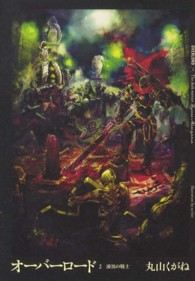Full Description
Through musical analysis of compositions written in the first half of the twentieth century, Analytic Essays on Music by Women Composers: Concert Music, 1900-1960 celebrates the achievements of eight composers: Alma Mahler-Werfel (1879-1964), Rebecca Clarke (1886-1979), Dame Ethel Smyth (1858-1944), Ruth Crawford (1901-53), Florence B. Price (1887-1953), Galina Ustvolskaya (1919-2006), J. M. Beyer (1888-1944), and Peggy Glanville-Hicks (1912-90). Written by outstanding music theorists and musicologists, the essays provide thought-provoking in-depth explorations of representative compositions, often linking analytical observations with questions of meaning and sociohistorical context. Each essay is introduced by a brief biographical sketch of the composer by editors Laurel Parsons and Brenda Ravenscroft.
This collection - Volume 2 in an unprecedented four-volume series of analytical studies on music by women composers - is designed to challenge and stimulate a wide range of readers. For academics, these thoughtful analytical essays can open new paths into unexplored research areas in the fields of music theory and musicology. Post-secondary instructors may be inspired by the insights offered in these essays to include new works in music theory and history courses at both graduate and upper-level undergraduate levels, or in courses on women and music. Finally, for soloists, ensembles, conductors, and music broadcasters, these detailed analyses can offer enriched understandings of this repertoire and suggest fresh, new programming possibilities to share with listeners.
Contents
Acknowledgements
About the Companion Website
Chapter 1. Introduction
Laurel Parsons and Brenda Ravenscroft
Part 1. Music for Voice
Chapter 2. Alma Mahler-Werfel, "Licht in der Nacht" (1901): Searching for the Light: Harmonic Cycles and Feedback Loops in Alma Mahler-Werfel's "Licht in der Nacht"
Kenneth M. Smith
Chapter 3. Rebecca Clarke, "Tiger, Tiger" (1933): Extended Tonality and Text-Setting in Rebecca Clarke's "Tiger, Tiger"
Zachary Bernstein
Chapter 4. Ethel Smyth, The Boatswain's Mate (1913-1914): A Wrinkle? Gender and Motive in Ethel Smyth's The Boatswain's Mate
Rachel Lumsden
Chapter 5. Ruth Crawford, Chants for Women's Chorus (1930): "Not yet accepted as singing": Ruth Crawford's "To An Angel" from Chants for Women's Chorus
Ellie M. Hisama
Part 2. Instrumental Music
Chapter 6. Florence B. Price, Piano Sonata in E minor (1932): Culture and Craft in Florence Price's Piano Sonata in E minor (First Movement)
Horace J. Maxile, Jr.
Chapter 7. Galina Ustvolskaya, Sonata for Violin and Piano (1952): Motivic Patterns, Repetition, and Formal Structures in Galina Ustvolskaya's Sonata for Violin and Piano
Tim Sullivan
Chapter 8. J. M. Beyer, String Quartet no. 2 (1933-34): Imagination and Method: J. M. Beyer's String Quartet no. 2
Marguerite Boland
Chapter 9. Peggy Glanville-Hicks, Sinfonia da Pacifica (1952-53): Avant-garde or Postmodern? The Melody-Rhythm Concept in Peggy Glanville-Hicks's Sinfonia da Pacifica
Victoria Rogers
Glossary
Bibliography
Index







